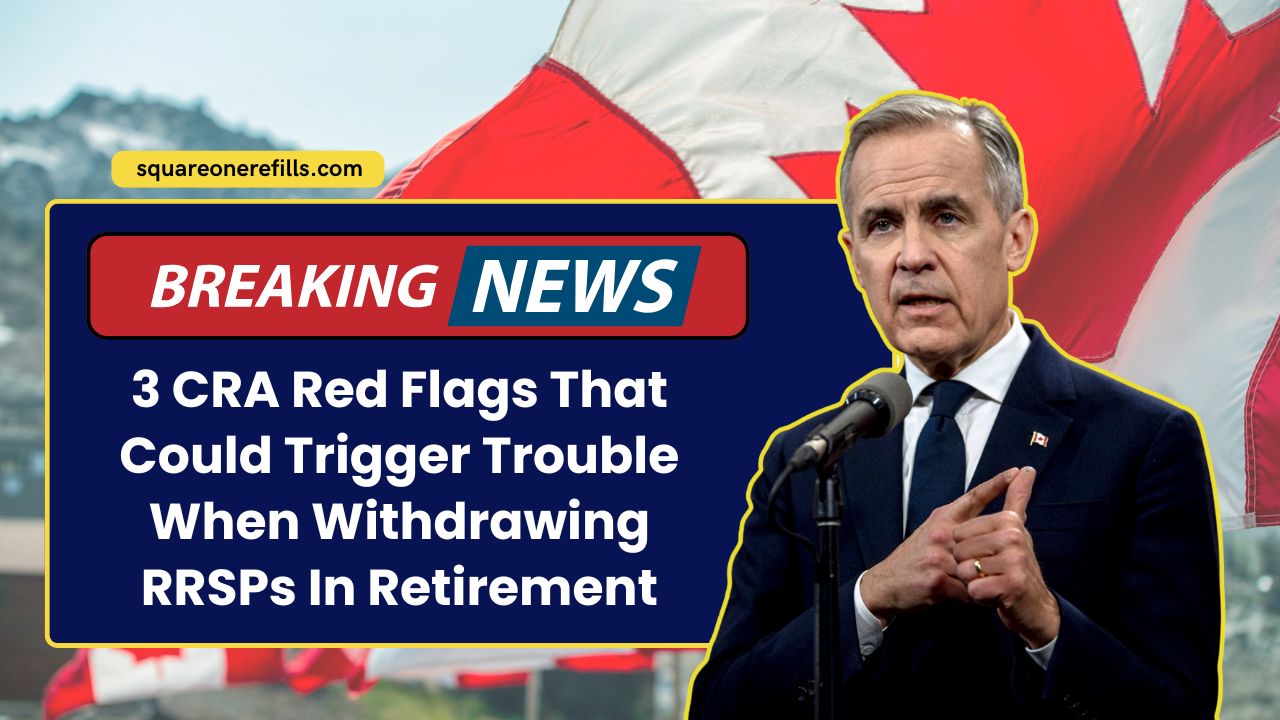Retirement planning often centers on Registered Retirement Savings Plans (RRSPs)—a proven way to defer taxes until you retire. But today’s retirement landscape is changing. Many Canadians continue working part-time into their senior years due to rising costs.
This shift has triggered three key CRA red flags that could drastically increase your taxes or spark penalties if RRSP withdrawals aren’t handled carefully.
Red Flag 1: Withdrawing While Still Working
The CRA treats RRSP withdrawals as taxable income in the year you take them. If you’re still working (even part-time), those withdrawals may push you into a higher tax bracket, resulting in:
- Higher withholding tax at time of withdrawal
- Increased overall marginal tax rate
- Reduced net benefit from your RRSP strategy
If possible, postponing withdrawals until you fully retire can significantly reduce tax impact—and help preserve your savings.
Red Flag 2: Over‑Contribution Penalties
Exceeding your allowable yearly RRSP contribution limit—even by mistake—can trigger costly penalties. For 2025, the CRA rules are:
- Max contribution is 18% of the previous year’s earned income, capped at $32,490
- You get a $2,000 lifetime over‑contribution buffer, but any excess beyond that is taxed at 1% per month until withdrawn
Failing to track your limit carefully or combining personal and spousal contributions can easily land you in penalty territory.
Red Flag 3: Unauthorized Investments
Carrying non-qualified or prohibited instruments in your RRSP can lead to harsh consequences. The CRA does not permit:
- Private foreign company shares (unless publicly listed)
- Direct real estate holdings
- Certain complex derivatives
Holding such unauthorized investments can lead to penalties, loss of RRSP status, and unwanted tax liabilities.
CRA Red Flags & Key Details
| Red Flag | Risk/Consequence | What Triggers It |
|---|---|---|
| Withdrawing While Working | Higher tax bracket, extra withholding, reduced income efficiency | Taking withdrawals while still earning income |
| Over-Contribution | 1% monthly penalty on excess amounts (beyond $2,000) | Contributing more than permitted limit |
| Unauthorized Investments | Tax penalties or loss of RRSP status | Holding prohibited assets within your RRSP |
How to Navigate These Red Flags Safely
Withdraw Smartly
- Delay major withdrawals until after you stop working.
- Avoid large lump‑sum withdrawals that can spike your taxable income.
Track Your Limits
- Check your annual Notice of Assessment or CRA My Account to know your deduction limit.
- Remember, spousal RRSP contributions count against your limits too.
Hold Only CRA‑Approved Investments
- Stick to Canadian or publicly traded ETFs, stocks, bonds, or mutual funds.
- If unsure about a holding, consult a financial advisor or check CRA’s list of qualified investments.
Extra Consideration: Withholding Tax Rates
When you withdraw from an RRSP, your financial institution withholds tax at the time of withdrawal:
| Withdrawal Amount | Withholding Rate |
|---|---|
| Up to $5,000 | 10% (Quebec: 19%) |
| $5,001 – $15,000 | 20% (Quebec: 24%) |
| Over $15,000 | 30% (Quebec: 29%) |
While withholding is immediate, your actual tax liability depends on total income—so final taxes may be higher or result in a refund later.
ading to unexpected taxes, penalties, or complications. Be mindful about:
- Timing withdrawals—especially if you’re still earning.
- Staying within contribution limits and avoiding excess contributions.
- Holding only allowable investments inside your RRSP.
By planning withdrawals carefully, staying compliant, and monitoring your RRSP contributions and holdings, you can protect your retirement nest egg and avoid costly mistakes.
FAQs
Can withdrawing while still working really increase my overall tax?
Yes. Any RRSP withdrawal is added to your income for the year. If you’re still earning, that extra income could push you into a higher tax bracket, increasing your overall tax rate and reducing your net benefit.
What happens if I accidentally over-contribute to my RRSP by under $2,000?
You won’t face a penalty, but you won’t get a deduction on that excess amount. If you exceed your limit by more than $2,000, CRA charges 1% per month on the excess until it’s removed or corrected.
How do I know if an investment is unauthorized inside my RRSP?
If it’s a private foreign share, direct real estate, or an unregulated derivative, it’s likely unauthorized. Always check CRA’s guidelines or consult a financial advisor before holding any non-standard assets in your RRSP.

